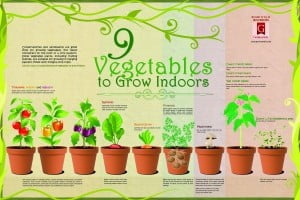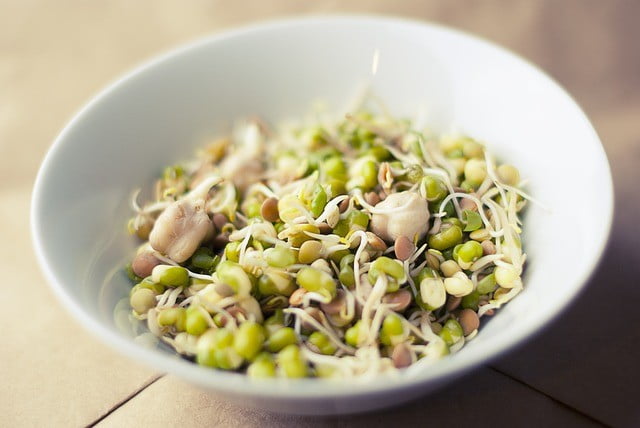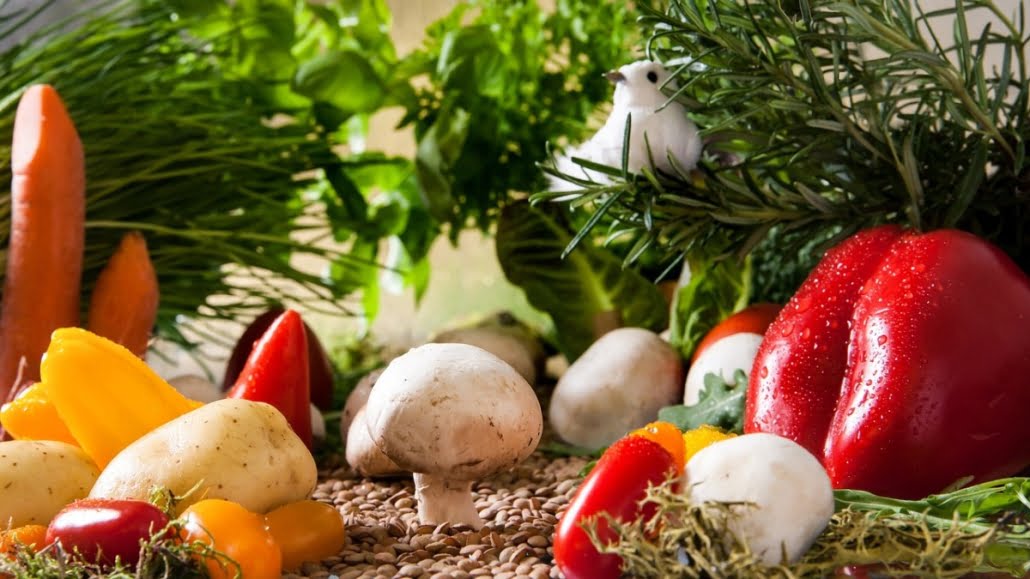 Now I know that “hydroponically” is not necessarily correct grammar, but it got your attention right? Anyways, I love gardening indoors just as I’m sure you do as well. It not only gives you a sense of privacy (depending on what your growing), but because it is an easy way to extend your outside garden inside if space is limited outside.
Now I know that “hydroponically” is not necessarily correct grammar, but it got your attention right? Anyways, I love gardening indoors just as I’m sure you do as well. It not only gives you a sense of privacy (depending on what your growing), but because it is an easy way to extend your outside garden inside if space is limited outside.
I’ve grown different types of vegetables, herbs, and some house plants and some have been very easy to work with, while others are just a straight pain in the behind because of so much testing and pampering that I had to do. Nevertheless, I learned alot and had a lot of fun at the same time which are the most important aspects of indoor gardening.
So whether you’re indoor gardening vegetables because you want fresh produce over the winter or you simply want to garden because you don’t have a plot outside, here are a few tips (with experience backing these up) for raising vegetables indoors.
Basics Of Growing Vegetables Indoors With Lights
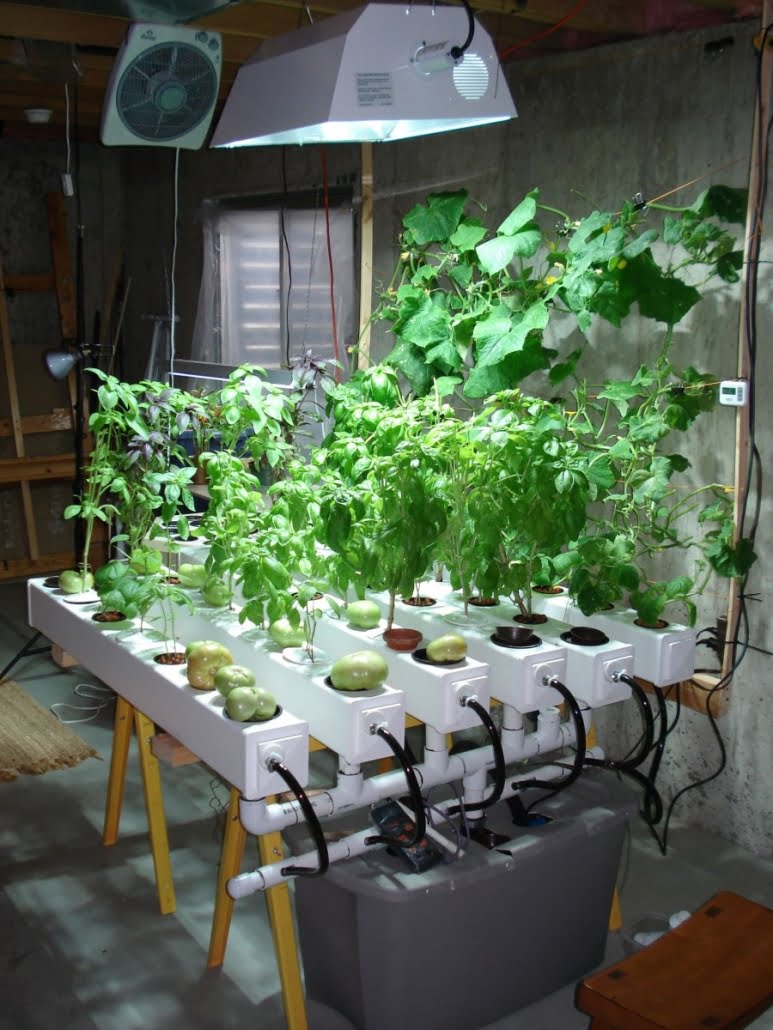 The main issues for raising vegetables indoors are giving them the right level of light, having a good growing medium, the right humidity and temperature and air circulation. While you may find good potting soil outside and your apartment already has decent air temperature and humidity for growing plants, the reality is that your existing lights are not likely to be good enough.
The main issues for raising vegetables indoors are giving them the right level of light, having a good growing medium, the right humidity and temperature and air circulation. While you may find good potting soil outside and your apartment already has decent air temperature and humidity for growing plants, the reality is that your existing lights are not likely to be good enough.
The fluorescent lamps that keep ivy growing in the corner and supplement natural sunlight for your potted violets isn’t going to be strong enough to feed vegetables. This is why anyone raising vegetables indoors should plan on using grow lamps of some sort. Even an herb garden in the window may need supplemental light in the winter due to the shorter days.
Depending on the plants you select, you could raise them solely from sunlight coming in through the window. This is where plant racks that put the plants squarely in the middle of the window become essential if you don’t want to use grow lights. And in this case, you need to know how many hours of sunlight comes through the window and only put plants there that will thrive with that level of light.
Shelving lets you raise plants with a minimum of floor space, but you need to be careful to ensure that all plants get enough light. This could require a grow light for each shelf, but this means that you have to carefully place the lights far enough above your plants to not burn them.
Which Are The Easiest Vegetables To Grow Indoors Without Soil?
Fruiting vegetables like cucumbers and tomatoes need a lot more light than salad greens like lettuce. This is one reason why lettuce and spinach are so popularly grown in indoor factory farms while tomatoes are raised in greenhouses with natural sunlight.
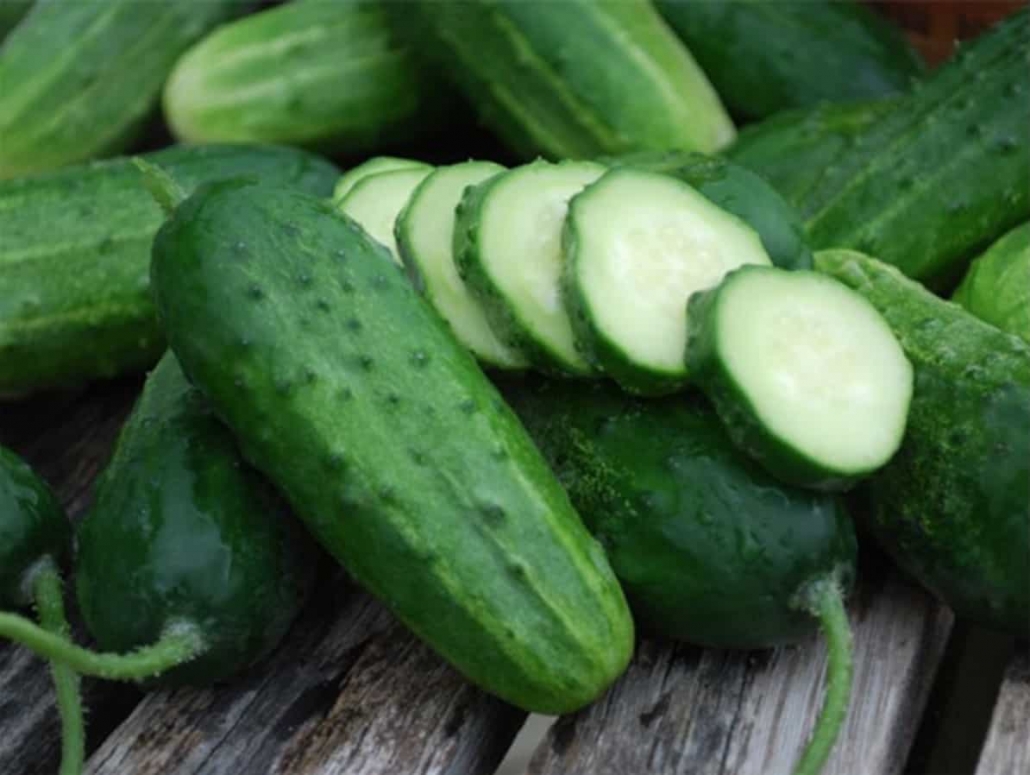 The other reason is that their shallow roots make them suitable for growing even in shallow window boxes, though they are sometimes raised in grey-water systems and don’t need soil at all.
The other reason is that their shallow roots make them suitable for growing even in shallow window boxes, though they are sometimes raised in grey-water systems and don’t need soil at all.
You can raise tomatoes under grow lights, but it is going to be more energy intensive. Corn, squash and beans need a lot of light and are best raised outside. Then there’s the fact that corn and beans (barring heirloom varieties) are so cheap that there’s no point in raising it yourself.
Herbs and root vegetables need less light than cucumbers and peppers, but root vegetables tend to need a lot of depth for their roots as well as vertical height for the leaves. This is why someone who wants to grow potatoes should consider a potato barrel outside instead of trying to raise them indoors.
Carrots require relatively little light and are hardy, but you could plant them along the edge of your flowerbed or under your bushes instead of trying to raise them inside. Conversely, you can plant them in containers, as well.
Best Vegetables To Grow Indoors
Your probably asking by now, Alicia, so what are the best vegetables to grow indoors? In short, these will be vegetables or plants that don’t take up alot of space especially horizontal space.
Also, vegetables or plants that don’t require too much pampering and constant supervision are some of the best vegetables to grow indoors especially if you are a beginner indoor gardener.
Beets and onions can be raised indoors, but from experience onions, garlic and herbs are a better choice since you’ll enjoy strong flavor from even a small harvest. In the case of herbs, you may be able to raise herbs in your own herb garden for less money than it would cost to buy them at the store.
Garlic greens stand out as an excellent choice since you can create a steady supply of garlic tops; just put the garlic cloves an inch deep in four inch deep soil and water regularly. If you get a pot that is at least 10” deep, you could grow fresh mint without much issue for your enjoyment and health.
Mini-tomatoes can be raised indoors as well. Cherry tomatoes have the added benefit of being fun to pop in a salad to eat. Lettuces can be raised indoors, but the cost-effectiveness is questionable. Peas prefer cooler temperatures, so they could be raised under grow lights if they aren’t exposed to too much heat.
Growing Broccoli, Cauliflower, and Potatoes
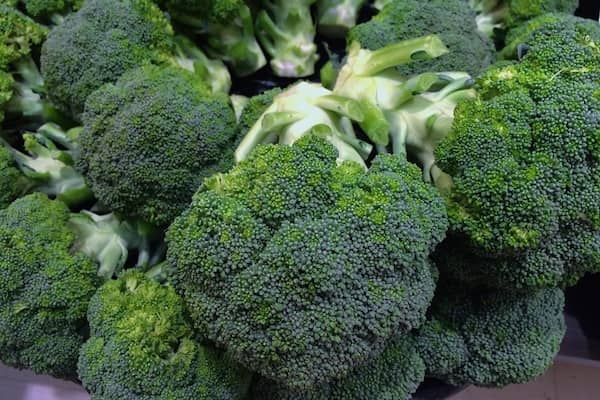 Broccoli, cauliflower and potatoes can all theoretically be raised indoors if given enough space to grow. Again, now you have to decide whether you really want fresh broccoli or would rather dedicated the space to herbs.
Broccoli, cauliflower and potatoes can all theoretically be raised indoors if given enough space to grow. Again, now you have to decide whether you really want fresh broccoli or would rather dedicated the space to herbs.
If you do want to raise plants like potatoes, you can buy potato “towers” and bags to grow them vertically. This tactic is employed by gardeners with limited mobility, since you don’t have to dig down into the soil to harvest the potatoes. Potato bags and towers can be reused two or three times a year to grow a crop.
How About Them Peppers and Scallions…
If you want to try to grow peppers indoors, such as an unusual variety not available at the grocery store, you’ll need a container that’s at least ten inches tall and a grow light. Hot peppers need at least ten hours of light a day.
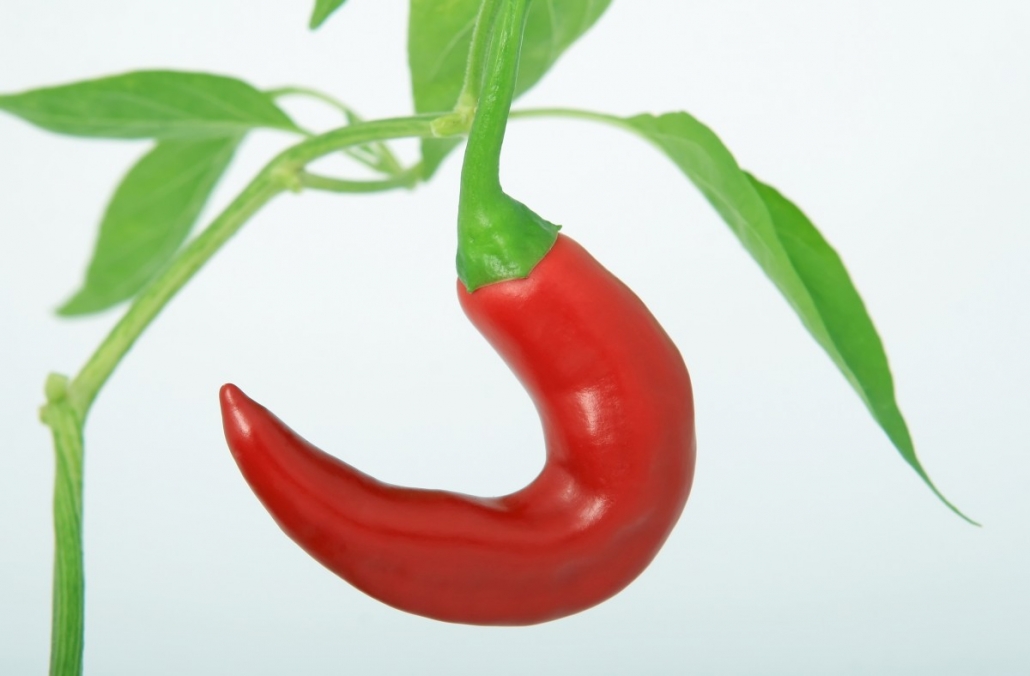 At the other end of the spectrum are scallions. Scallions don’t even require you to buy seeds; simply bundle the scallions you get from the store and put the bottom of the bundle in water. Once the scallions start growing roots move them to soil and let them continue to grow.
At the other end of the spectrum are scallions. Scallions don’t even require you to buy seeds; simply bundle the scallions you get from the store and put the bottom of the bundle in water. Once the scallions start growing roots move them to soil and let them continue to grow.
Believe it or not scallions are a renewable resource. In other words if you harvest the green tops while leaving at least an inch to regrow, they will regenerate. You could also take one scallion out of the container to use the white portion while leaving the rest to continue growing.
Let’s Talk About Microgreens
Hands down for me the simplest vegetables to grow indoors are microgreens. What are microgreens? Well, these are the first shoots of salad vegetables like Swiss chard, mustard, basil, kale, cilantro, beetroot and arugula.
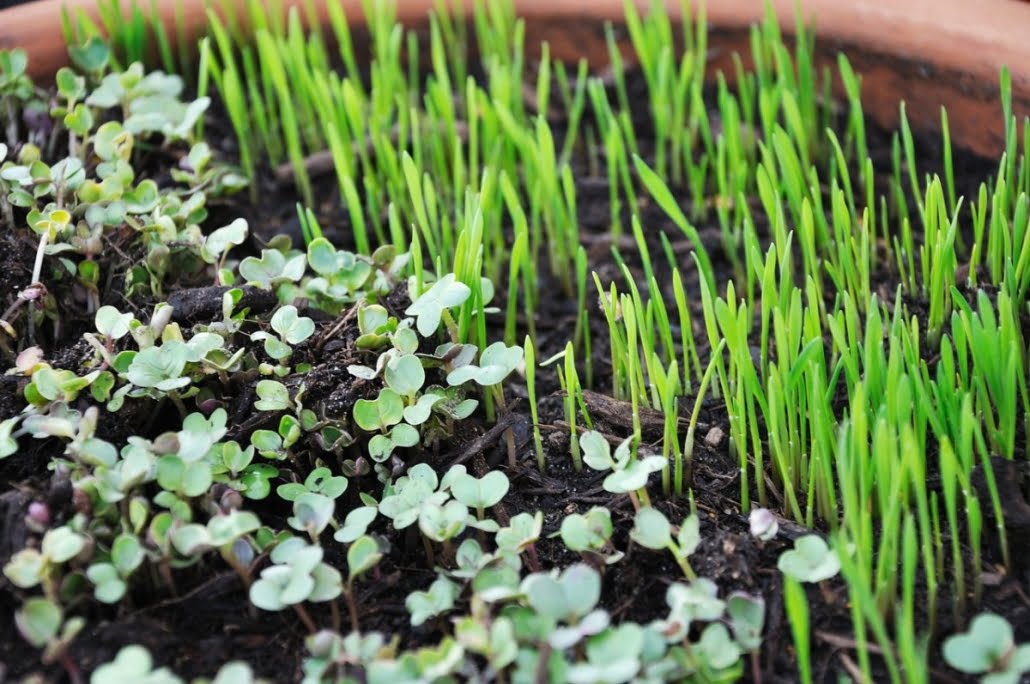 These shoots are called micro-greens because they are smaller than “baby greens”. These shoots are ofte
These shoots are called micro-greens because they are smaller than “baby greens”. These shoots are ofte
n used as garnishes on dishes. The benefits of raising microgreens include the fact that they’re available in one to two weeks and don’t require a lot of space.
Microgreens need at least a fluorescent light or two to grow, although 10-12 hours under a grow light is ideal. You want to make sure that you harvest them once they are one to two inches tall. This could take anywhere from one to three weeks, although strong light will help accelerate this process.
Last But Not Least Let’s Talk About Sprouts
Another easy vegetable that i could easily put in the same category as microgreens and that is sprouts. These vegetables are cheaper to grow at home than buy them at the store and they’re fresher when you raise them yourself.
To grow sprouts, you only need the seeds, a mason jar and a sprouting lid. Bean sprouts are about the most popular and easiest sprouts to grow. The best two things about growing sprouts is that they don’t really need much light to grow yet are so healthy to eat.
Additional Resources
9 Vegetables That You Can Grow Indoors No Matter What The Weather

